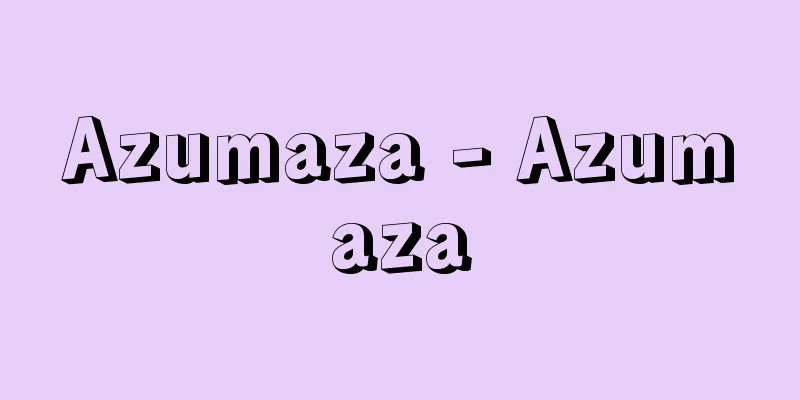Shinso - Foundation of the Heart

|
〘Noun〙 The foundation stone of the central pillar of a pagoda, which plays the most important role. In the Asuka and early Nara periods, many had a reliquary hole for enshrining relics, but after the late Nara period, the facilities for enshrining relics were gradually simplified and disappeared. ※Shoku Nihongi - Jingo Keiun 4th year (770), February Heijin "The central cornerstone of the east pagoda of Saidaiji Temple was destroyed. The stone is over 100 meters in size and 9 feet thick." Source: The Selected Edition of the Japanese Language Dictionary About the Selected Edition of the Japanese Language Dictionary Information |
|
〘名〙 塔の中心柱の礎石で、最も重要な役割をなすもの。飛鳥・奈良前期には舎利を奉安する舎利孔を有するものが多いが、奈良後期以後は舎利奉安の施設はしだいに簡略化し、消滅した。※続日本紀‐神護景雲四年(770)二月丙辰「破二却西大寺東塔心礎一。其石大方一丈余、厚九尺」
出典 精選版 日本国語大辞典精選版 日本国語大辞典について 情報 |
<<: Injo - Jinso (English spelling)
>>: New Selection of Rōeishu - Shinsenrōeishu
Recommend
Peer trade
In the broad sense, it refers to transactions betw...
Xie Bingxin - Xie Bingxin
Chinese female writer. Her real name was Xie Wany...
Ryti, R. (English spelling) RytiR
...in office 1919-25). During World War II, the g...
Studios
…A representative monastery of the Eastern Orthod...
Chinchila
...The following breeds have been established for...
Institute for Science of Labor - Institute for Science of Labor
The successor to the Kurashiki Institute for Scien...
Gashun Nooru - Gashun Nooru
…A salt lake in the desert on the plateau in the ...
Liquid Compass - Stationary Compass
…Magnets with strong magnetic force cannot be use...
Kaixi Jorgensen - Kaisei Jorgensen
… [Before entering the customs] [The Rise of the ...
Kipp, PJ (English spelling) KippPJ
...Kipp's gas generator is also called Kipp&#...
Shinro
The Chinese name of a Cambodian country that aros...
Aneroid blood pressure monitor - Aneroid blood pressure monitor
...A mercury sphygmomanometer indicates the cuff ...
Skutterudite
...In the Democratic Republic of the Congo in the...
Idea Nazionale (English spelling)
...The movement progressed and led to the formati...
Ring dike
A ring-shaped dyke. When a volcano erupts catastr...



![Ariake [town] - Ariake](/upload/images/67cadc3662d09.webp)
![Atsugi [city] - Atsugi](/upload/images/67cad515abfcf.webp)




